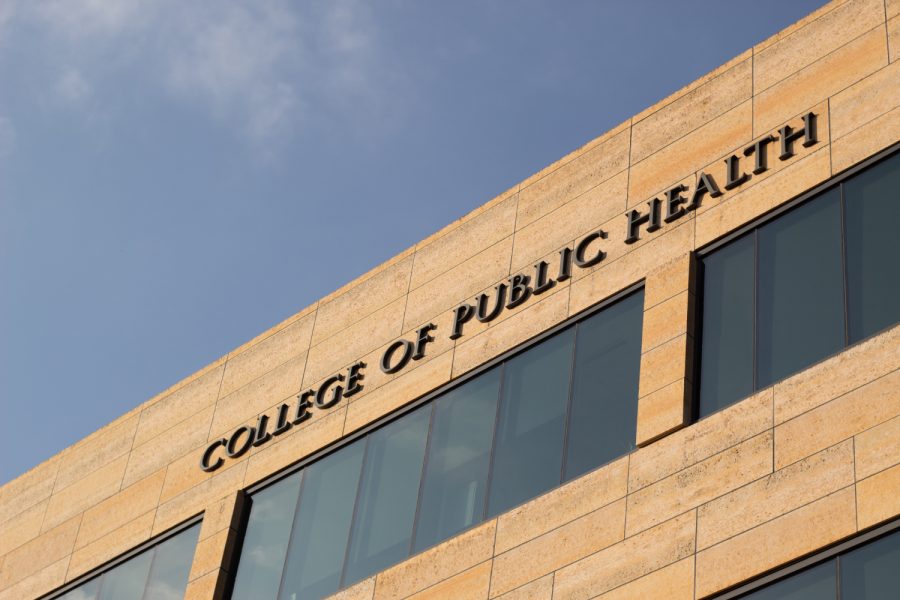Iowa cancer report advises urgent return to cancer screenings after pandemic
Iowa medical experts urged residents to get cancer screenings in a virtual review of the ‘Cancer in Iowa: 2022’ report on Monday. The report shows preventable cancer deaths have increased during the pandemic, since many adults avoided or delayed tests.
College of Public Health is seen in Iowa City on Monday, Aug. 30, 2021.
March 7, 2022
Iowa medical experts are urging the community to get screened for cancer after the pandemic delayed many tests.
At a virtual news briefing on Monday, Iowa medical panelists reviewed the annual Cancer in Iowa report for 2022 issued by the State Health Registry of Iowa in the University of Iowa College of Public Health. The report clarifies how the pandemic has reduced cancer screenings, which are crucial to allowing health care experts to catch and prevent cancer or cancer progression.
Richard Deming, medical director of MercyOne Cancer Center, emphasized that screenings save lives.
“It’s estimated that with the dip in cancer screening that occurred with the COVID pandemic that we may see over 10,000 excess deaths to breast cancer and colorectal cancer just because of the loss of early screening,” Deming said.
Increased alcohol consumption and decreased physical activity were other contributors to these numbers, Deming said.
Andrew Nish, a medical director at the John Stoddard Cancer Center in Des Moines, said his team participated in the Return to Screening initiative, a project between the National Comprehensive Cancer Network, the American Cancer Society, and the Cancer Research Center.
“[After the pandemic reached the U.S.], screening rates plummeted. I mean, they went down as much as 90 percent, depending on which screening you were talking about,” Nish said. “The risk of not screening was far riskier than the risk of getting COVID from a screening test.”
Nish said his team implemented a multipronged program to lift screening rates by 10 percent.
With the help of primary care providers, he said they worked to improve physician and primary care clinic communication about screenings to patients.
“Patients were sent emails, patients were sent letters, patients were sent notifications in their MyChart,” he said. “We were particularly interested in getting those patients back to missed screenings, so actual phone calls were made to those patients.”
Additionally, the team tried to educate patients with brochures, social media, a podcast, public service announcements, radio and TV, and a website feature all to call attention to the need for cancer screening.
From April to November 2021, Nish said the breast cancer screening rates went up about three percent, lung cancer rates went up five percent, and colorectal went up 31 percent, the only one far exceeding their goal of a 10 percent increase.
Mary Charlton, an associate professor in the UI Department of Epidemiology, said the College of Public Health estimates that 20,000 Iowans will be diagnosed with cancer this year, up over a thousand from last year.
“We estimate that there are almost 160,000 people living in Iowa who have been diagnosed with cancer at some point since 1973 when the Iowa Cancer Registry began collecting data,” Charlton said.
Between March and June 2020, the report notes 41 percent of U.S. adults avoided or delayed cancer screening tests among other types of medical care, which experts suggest augmented the amount of avoidable cancer deaths, Charlton said.
While Iowa’s screening rates for breast, cervical, and colorectal cancers are moderately higher than the national median screening rates, the Iowa Department of Public Health Healthy Iowans program, according to an article by the UI College of Public Health, sets higher screenings goals:
- 85 percent for breast cancer (currently 81 percent)
- 92 percent for cervical cancer (currently 77 percent)
- 80 percent for colorectal cancer (currently 74 percent)
“Our goal with this year’s report is to inspire anyone who may have missed or delayed cancer screenings to talk to their doctor about getting back on track,” Charlton said. “We would also like to encourage health care providers to strongly recommend screening for those who are eligible.”
The United States Preventive Services Task Force recommends regular screening tests for colorectal, cervical, breast, and lung cancers, all of which are common forms of the disease, she said, as well as follow-up appointments for any abnormal results.
“About two-thirds of colorectal cancer deaths in the U.S. can be prevented through screening,” Charlton said, reading from the report. “The percentage of eligible Iowans getting screenings has not yet reached the national colorectal cancer roundtable goal of eight percent, and we are behind neighboring states like Minnesota and Wisconsin.”
Charlton cited cervical cancer as a disease that screenings and HPV vaccinations can eliminate. Despite this possibility, screening rates are still dropping as cervical cancer rates rise.
The rate of breast cancer has increased recently, but the number of resultant deaths has decreased, she said, partly because of increased usage of screening mammography, allowing patients to identify cancer before it spreads.
“Only one in four lung cancer cases are diagnosed at an early stage in Iowa, when the cancer is most treatable,” she said. “Lung cancer screening is now widely available across Iowa.”
George Weiner, a UI professor in the department of internal medicine, described the four pillars necessary to close the gap in cancer screening, according to President Joe Biden’s Cancer Panel.
These include:
- To improve and align communication about screening.
- To facilitate equitable access to screening.
- To strengthen collaborations.
- To create effective health care information technology.
The second pillar, he said, refers to socioeconomic groups, especially inner-city minorities, and rural populations, who have lower rates of cancer screening, initiation, and follow-up appointments.
The fourth pillar, Weiner said, includes systems such as MyChart and others that help providers, patients, and others understand the importance of cancer screening; such information technologies can assist shared decision-making between the patient and provider.














